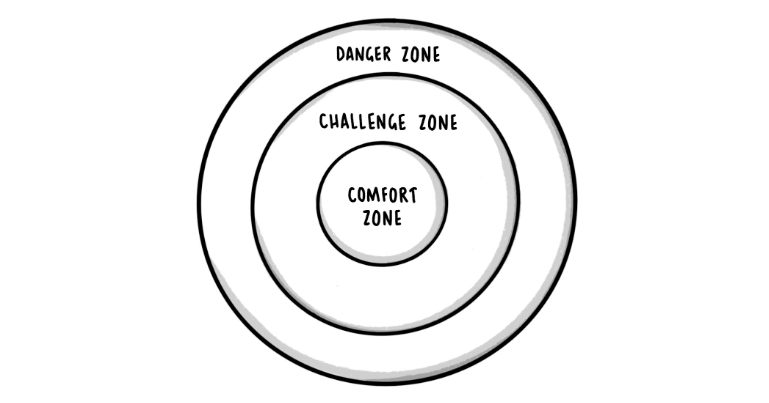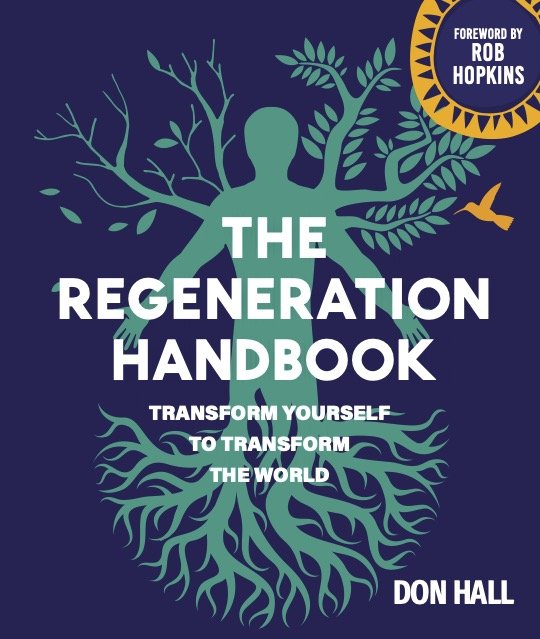Tips and Tools for Avoiding Burnout from The Regeneration Handbook

"Although burnout is well-known as a potential pitfall throughout the activist community, many of us keep falling into it again and again. Depending on how you count it, I’ve burned out at least four times over the past two decades. However, each time I’ve learned more about why it happens. This has enabled me to bounce back more quickly and maybe even prevent burnout entirely by recognizing its early warning signs and knowing the right antidotes to apply.
Conventionally, burnout is understood simply as the result of working too hard for too long, and the remedy prescribed is the ubiquitous ‘self-care.’ While taking time off, exercising, eating healthy, and spending more time with friends undoubtedly helps, we should consider deeper reasons and subtler strategies as well.
Simply trying to remain conscious in these times isn’t easy. As tough as organic farming can be on the body, I’ve always found my work with the Transition Movement to be even more exhausting. I believe this is because it’s so intellectually demanding and emotionally charged. For this reason, when I was Executive Director of Transition US, I changed our definition of full-time work from 40 to 32 hours per week. Even that much time spent wrestling with humanity’s biggest problems is probably unsustainable over the long run.
Burnout can also be caused by persistent feelings of disempowerment and hopelessness. If we lack agency in our current role or doubt that our efforts are really making a difference, we should take that as a sign to speak up or make a change. If we don’t, we risk suppressing and internalizing our discontent. While we may be able to push through these feelings for a while, we eventually have to reckon with reality. When we can no longer tolerate our situation, we may already feel so drained and defeated that we may be inclined to give up altogether.
Working to make the world a better place is never going to be easy, but we can learn how to modulate our stress so it doesn’t become debilitating. Although a certain amount of disequilibrium is necessary for growth, pushing ourselves beyond our limits for too long is counterproductive.
One framework I’ve found to be useful for navigating this territory is called the ‘Learning Zone Model.’ I first came across it when I worked for Outward Bound and used to teach it to my teenage students. It’s both incredibly simple and surprisingly profound:

As you can see, it consists of three concentric circles. The smallest circle in the center is our ‘Comfort Zone.’ Beyond that, we have a ‘Learning Zone’ (which is sometimes called our ‘Challenge Zone’) and a ‘Panic Zone’ (or ‘Danger Zone’). The basic idea is to spend as much time as possible in our Challenge Zone without tipping ourselves over into danger. As we repeatedly stretch ourselves in this way, our Comfort Zone expands while our Danger Zone naturally contracts.
Sometimes these zones are color coded (green for Comfort, yellow for Challenge, and red for Danger) to make them even easier to remember. However, because the contents and dimensions of these zones vary from person to person and moment to moment, the only way we can really know where we are is by cultivating direct awareness of our state of being. If we can do that, we’ll be able to intuitively sense when we need to rest and when we need to push forward.
When doing stressful work, we should check in with ourselves periodically and ask whether we’re currently in the green, yellow, or red. When I’ve been running in the red too long, my favorite thing to do is take a nap. Often, I fall asleep, while other times, I simply lie down on my back with my eyes closed, tune into my breath, and imagine all of the stress in my body and mind gradually melting down into the Earth. Either way, I almost always rise up after a half an hour or so feeling refreshed. Playing music or going for a long walk tends to have a similar effect.
Another tool I’ve developed for preventing burnout is what I’ve come to call the Mandala of Life. It attempts to take the Mandala of the Five Buddha Families from the Tibetan Buddhist tradition, and translate it into a guide for maintaining balance in everyday life:

In this context, the Buddha Buddha family represents our physical and spiritual well-being, which needs to be firmly planted in the center. The Vajra Buddha family (in the East) symbolizes our need to always be developing ourselves intellectually. The Ratna Buddha family (in the South) is connected with home and community, the Padma Buddha family (in the West) with love and self-expression, and the Karma Buddha family (in the North) with service to our wider world. All five of these elements need to be continually attended to. I find that if I neglect any one for too long, I become wobbly, like a chair that’s missing a leg.
I typically use the Mandala of Life simply by calling it to mind every so often and asking myself what I’m doing to nurture myself in each of these five areas. Then, I reflect on how well they’re currently balanced and where I might need to pay more attention. Occasionally, I even draw these five circles on a piece of paper and take written notes.
Try creating your own mandala and asking yourself these same questions. However, in doing so, we shouldn’t be trying to stuff ourselves into little boxes. After all, our life is more like an ever-changing river than a tidy to-do list. If we can embrace our basic goodness, embody it through practice, live into our deepest purpose, and maintain an ongoing sense of balance, the mandala of our life will unfold on its own.”

Check Don Hall's website:




